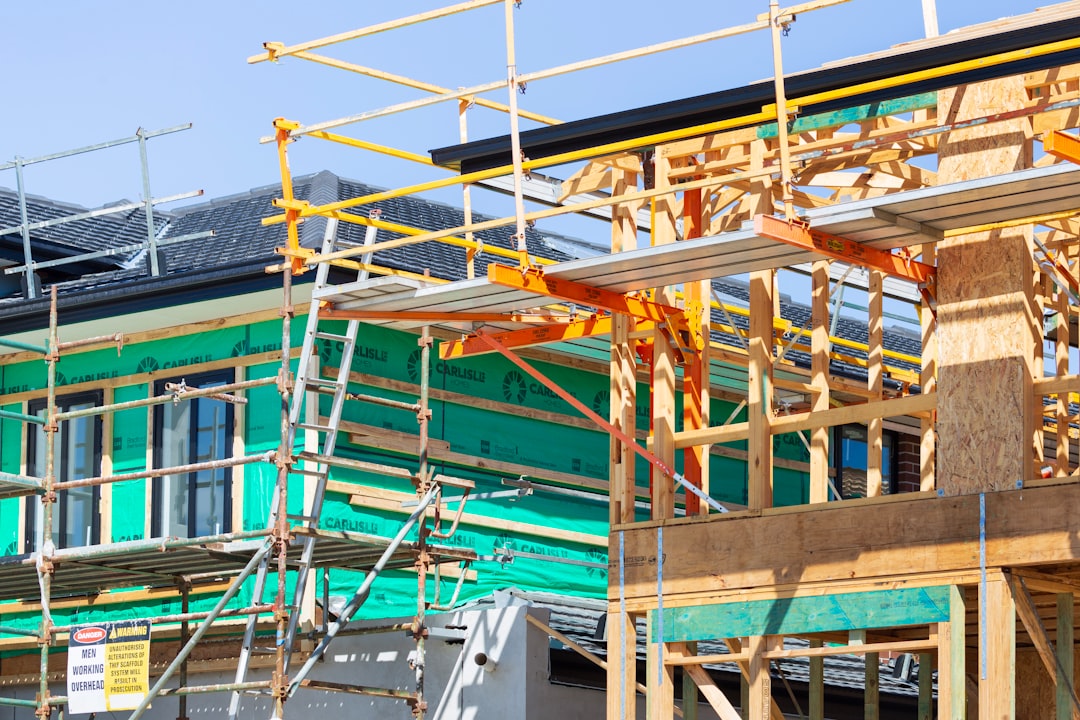In recent years, the integration of artificial intelligence (AI) into various sectors has revolutionized how we approach complex problems, and the field of building performance analysis is no exception. KI-gesteuerte Gebäudeleistungsanalyse, or AI-driven building performance analysis, represents a significant leap forward in our ability to monitor, assess, and optimize the energy efficiency of buildings. As urbanization continues to rise and the demand for sustainable practices becomes more pressing, the need for innovative solutions to manage energy consumption has never been greater.
This technology not only enhances operational efficiency but also contributes to a more sustainable future by reducing the carbon footprint of buildings. The concept of KI-gesteuerte Gebäudeleistungsanalyse encompasses a range of AI systems designed to analyze vast amounts of data related to energy consumption, occupancy patterns, and environmental conditions. By leveraging machine learning algorithms and advanced analytics, these systems can identify inefficiencies, predict energy usage trends, and recommend actionable strategies for improvement.
Key Takeaways
- KI-gesteuerte Gebäudeleistungsanalyse, or AI-driven building performance analysis, is a powerful tool for optimizing energy consumption and reducing costs in buildings.
- KI-Systeme play a crucial role in analyzing energy consumption data, providing valuable insights and identifying opportunities for improvement.
- The benefits of KI-Systeme in improving building efficiency and reducing costs include enhanced predictive maintenance, optimized energy usage, and improved occupant comfort.
- Case studies demonstrate how KI-Systeme can optimize building automation, leading to significant energy savings and operational efficiencies.
- KI-Systeme have a tangible impact on automatic climate control settings, ensuring optimal indoor conditions while minimizing energy waste.
Understanding KI-Systeme and their role in analyzing energy consumption data
At the heart of KI-gesteuerte Gebäudeleistungsanalyse are sophisticated KI-Systeme that utilize machine learning and data analytics to process and interpret energy consumption data. These systems are designed to handle large datasets generated by various building management systems, including HVAC (heating, ventilation, and air conditioning), lighting, and occupancy sensors. By analyzing this data in real-time, KI-Systeme can uncover patterns and anomalies that may not be immediately apparent to human operators.
This capability allows for a more nuanced understanding of how energy is consumed within a building and where opportunities for optimization exist. One of the key advantages of KI-Systeme is their ability to learn from historical data and adapt over time. As these systems are exposed to more data, they refine their algorithms to improve accuracy in predicting energy usage and identifying inefficiencies.
For instance, a KI-System might analyze past energy consumption patterns during different seasons or occupancy levels to forecast future needs more accurately. This predictive capability not only aids in immediate decision-making but also supports long-term strategic planning for energy management.
The benefits of KI-Systeme in improving building efficiency and reducing costs

The implementation of KI-Systeme in building performance analysis offers numerous benefits that extend beyond mere energy savings. One of the most significant advantages is the potential for substantial cost reductions. By optimizing energy consumption through intelligent automation and real-time monitoring, building operators can significantly lower utility bills.
For instance, a commercial building equipped with a KI-System may reduce its energy costs by adjusting HVAC settings based on occupancy patterns rather than relying on fixed schedules. This dynamic approach ensures that energy is used only when necessary, leading to considerable savings. Moreover, KI-Systeme contribute to enhanced operational efficiency by streamlining maintenance processes.
Predictive maintenance powered by AI can identify potential equipment failures before they occur, allowing for timely interventions that prevent costly downtime. For example, if a KI-System detects unusual energy consumption patterns from an HVAC unit, it can alert maintenance personnel to investigate further. This proactive approach not only saves money but also extends the lifespan of equipment, ultimately contributing to a more sustainable operation.
Case studies: Optimizing building automation through KI-Systeme
Several organizations have successfully implemented KI-Systeme to optimize building automation, showcasing the transformative power of this technology. One notable case study involves a large office complex that integrated an AI-driven building management system to monitor and control its HVAC and lighting systems. By analyzing real-time occupancy data and environmental conditions, the system was able to adjust settings dynamically throughout the day.
As a result, the building achieved a 30% reduction in energy consumption while maintaining optimal comfort levels for occupants. Another compelling example comes from a university campus that adopted a KI-System for its residential buildings. The system utilized machine learning algorithms to analyze historical energy usage data alongside weather forecasts and occupancy trends.
By predicting peak demand periods and adjusting energy usage accordingly, the campus was able to reduce its overall energy consumption by 25%. Additionally, the system provided valuable insights into user behavior, enabling the university to implement targeted awareness campaigns that further encouraged energy-saving practices among students.
Case studies: The impact of KI-Systeme on automatic climate control settings
The impact of KI-Systeme on automatic climate control settings is particularly noteworthy, as it directly influences occupant comfort and energy efficiency. In one case study involving a high-rise residential building, an AI-driven climate control system was implemented to optimize temperature settings based on real-time occupancy data. The system learned from residents’ habits and preferences over time, allowing it to adjust heating and cooling settings automatically.
This resulted in a significant reduction in energy usage while ensuring that residents remained comfortable throughout the day. Another example can be found in a commercial office space where an AI system was deployed to manage climate control across multiple floors. By analyzing data from occupancy sensors and external weather conditions, the system was able to create tailored climate profiles for different areas of the building.
This level of customization not only improved occupant satisfaction but also led to a 20% decrease in energy consumption related to heating and cooling. These case studies illustrate how KI-Systeme can enhance climate control settings in ways that traditional systems simply cannot achieve.
Implementing KI-Systeme for energy consumption analysis in buildings

The implementation of KI-Systeme for energy consumption analysis requires careful planning and consideration of various factors. First and foremost, building owners must ensure that they have access to high-quality data from existing building management systems. This may involve upgrading sensors or integrating new technologies capable of capturing relevant data points such as temperature, humidity, occupancy levels, and equipment performance metrics.
Once the necessary data infrastructure is in place, organizations can begin deploying AI algorithms tailored to their specific needs. This may involve collaborating with technology providers who specialize in AI-driven building performance solutions. Training these systems on historical data is crucial for achieving accurate predictions and insights.
Additionally, ongoing monitoring and refinement of the algorithms will be necessary to adapt to changing conditions within the building environment.
The future of KI-gesteuerte Gebäudeleistungsanalyse and its potential impact on sustainable building practices
Looking ahead, the future of KI-gesteuerte Gebäudeleistungsanalyse appears promising as advancements in AI technology continue to evolve. The integration of Internet of Things (IoT) devices with AI systems will further enhance data collection capabilities, allowing for even more granular insights into energy consumption patterns. As smart buildings become increasingly prevalent, the role of AI in optimizing performance will be paramount in achieving sustainability goals.
Moreover, as regulatory frameworks around energy efficiency become more stringent globally, organizations will be compelled to adopt innovative solutions like KI-Systeme to remain compliant while minimizing operational costs.
The importance of KI-Systeme in driving energy efficiency and cost savings in building operations
In conclusion, KI-gesteuerte Gebäudeleistungsanalyse represents a transformative approach to managing energy consumption in buildings. The deployment of KI-Systeme not only enhances operational efficiency but also drives significant cost savings while contributing to sustainability efforts. As demonstrated through various case studies, these systems have proven their ability to optimize building automation and climate control settings effectively.
As we move forward into an era where sustainability is paramount, the importance of integrating AI into building performance analysis cannot be overstated. By embracing these technologies, organizations can position themselves at the forefront of innovation while making meaningful strides toward a more sustainable future. The journey toward smarter buildings powered by AI is just beginning, and its potential impact on our built environment is boundless.
In der Diskussion über KI-gesteuerte Gebäudeleistungsanalyse, die darauf abzielt, die Energieeffizienz zu verbessern und Kosten zu senken, ist es auch interessant, einen Blick auf zukünftige Trends und Innovationen in verwandten Technologiebereichen zu werfen. Ein relevanter Artikel, der sich mit den Entwicklungen in der Metaverse-Industrie befasst, bietet Einblicke in die möglichen Überschneidungen zwischen fortschrittlichen KI-Systemen und neuen digitalen Umgebungen. Für weitere Informationen zu diesem Thema, besuchen Sie den Artikel Zukunftstrends und Innovationen in der Metaverse-Industrie, der Prognosen und innovative Ansätze in der Metaverse-Industrie beleuchtet, die auch für die Optimierung von Gebäudeleistungen durch KI relevant sein könnten.
FAQs
What is KI-gesteuerte Gebäudeleistungsanalyse?
KI-gesteuerte Gebäudeleistungsanalyse refers to the use of artificial intelligence (KI) systems to analyze energy consumption data in buildings. This analysis helps to improve the efficiency of buildings and reduce costs.
How do KI systems analyze energy consumption data in buildings?
KI systems use advanced algorithms to analyze energy consumption data from various sources such as sensors, meters, and building management systems. These systems can identify patterns, anomalies, and opportunities for optimization.
What are the benefits of KI-gesteuerte Gebäudeleistungsanalyse?
The benefits of KI-gesteuerte Gebäudeleistungsanalyse include improved energy efficiency, reduced operational costs, enhanced comfort for building occupants, and proactive maintenance of building systems.
What are some use cases for KI-gesteuerte Gebäudeleistungsanalyse?
Some use cases for KI-gesteuerte Gebäudeleistungsanalyse include optimizing building automation systems, automatically adjusting climate control settings based on occupancy and external conditions, and identifying opportunities for energy savings.
How can KI-gesteuerte Gebäudeleistungsanalyse help in reducing energy consumption?
By analyzing energy consumption data, KI systems can identify inefficiencies in building systems, recommend optimizations, and predict future energy usage patterns. This helps in reducing overall energy consumption and costs.











Leave a Reply